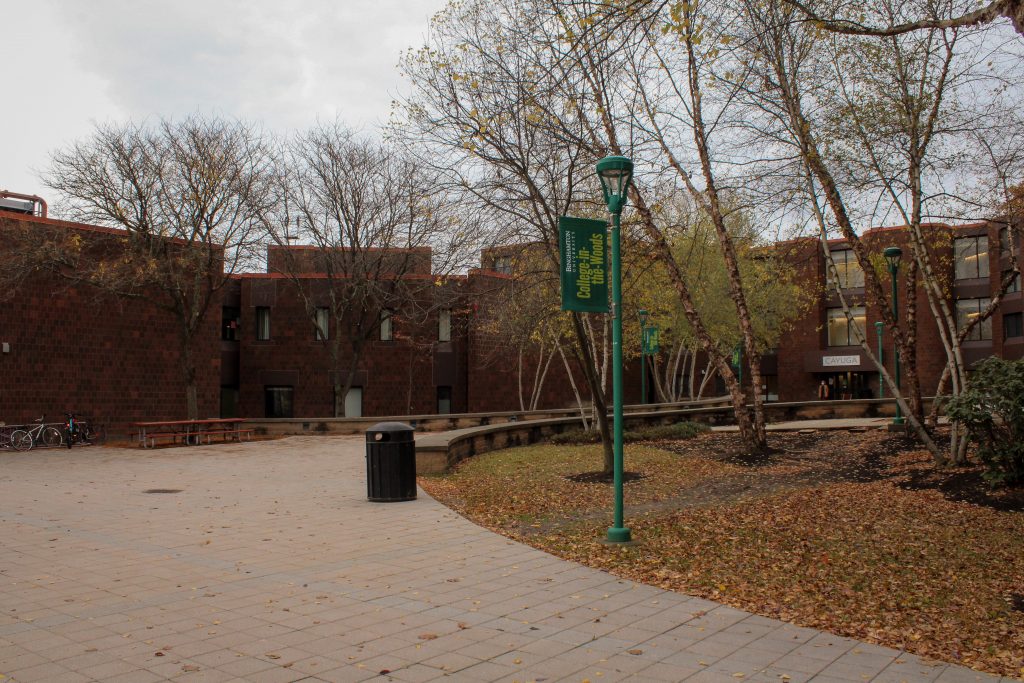In 1972, College-in-the-Woods was completed with the environment in mind when demonstrations conducted by students successfully led to the preservation of the woods, which were planned to be demolished. Nearly 50 years later, College-in-the-Woods is going back to its roots with its brand-new Environmental Action and Studies (EAS) learning community.
A learning community is where students with similar interests live on the same floor and take a course related to a particular field together. EAS joins two other learning communities hosted by College-in-the-Woods: Politics, Law and Society (PLS) and International Relations and Cultural Exchange (IRCE). Collegiate Professor of College-in-the-Woods Steve Ortiz, an associate professor of history, manages all three learning communities and wrote that the EAS community was created with the success of the other learning communities in mind, along with the rich history of the community.
“The EAS community seemed like a natural one both in terms of overall student interest and in terms of how environmental activism is central to the [College-in-the-Woods] origins story,” Ortiz wrote in an email. “We are what we are at [College-in-the-Woods] thanks to students’ of the 1970’s environmental activism that saved the woods around us and shrank the community footprint. So, given all of this, we wanted to expand our learning community offerings into a new building and [EAS] made the most sense.”
Ortiz proposed the idea last year and Carl Lipo, associate dean for research and programs and a professor of anthropology and environmental studies, was immediately on board. The EAS community was able to start because of a collaborative pursuit between College-in-the-Woods, the environmental studies program and Binghamton University. Lipo wrote that the EAS community is poised to become a fundamental experience to foster discussions of environmental issues and cooperation with the real-world community.
“The reputation that the campus has for being a leader in sustainable practices, sustainability research and other aspects of the environment has often been a decisive factor that contributes to the choices that students make when selecting [BU] as their university,” Lipo wrote in an email. “As I’ve seen among the students who are majors in the environmental studies program, [BU] students often have a deep passion for changing the world in ways that lead to increases in sustainability, equity and social justice.”
The EAS community is hosted in Onondaga Hall. Students part of the community must attend a course taught by Sean Cummings, adjunct lecturer of environmental studies and manager of BU Acres Farm, an on-campus farm that grows natural, pesticide-free and sustainable food to be served on campus. The course is about food justice, according to Tyler Linnehan, an undeclared freshman. Linnehan wrote that the community has allowed them to form relationships with their peers.
“Despite COVID-19 limitations, I think the class really helped start our connections on our floor,” Linnehan wrote in an email. “We took a field trip early on to [BU] Acres, and being physically with everyone outside of the classroom made it a lot less intimidating to start talking to people. Now, we hang out pretty often, playing board games or going to [Chenango Champlain Collegiate Center Nite Owl]. I’m very grateful to have people I can see indoors as it gets colder.”
Linnehan said Cummings has made the online course engaging with questions and a discussion-based platform. Despite this, Linnehan expressed disappointment over the future of environmental engagement with clubs and the community because environmental work has been limited due to COVID-19.
George Homsy, director of the environmental studies program, graduate director of the sustainable communities program and associate professor of environmental studies and public administration, wrote that, despite COVID-19, he has a bright perspective for the connection of the community with the environment.
“It is an odd year to start such an endeavor, with COVID-19 and all, but it has worked great so far with students collaborating in the classroom and in the community,” Homsy wrote in an email. “In the future, I hope that the learning community can really help connect students to the importance of environmental studies to the University, the community and to the planet.”
According to Homsy, the environmental studies major is the 10th-largest major in Harpur College, with 265 students participating. The environmental studies program at BU is the 20th-largest in the nation. The major allows students to have various specializations, including ecosystems, earth sciences, economics and more. Lipo wrote that the community will provide students the necessary tools to create change through their careers.
“The EAS community will provide a means by which students can begin to address these issues and meaningfully engage in real-world projects,” Lipo wrote. “Over time, I think the program is going to produce leaders who will use this experience to start their careers and by doing so improve our campus, community and the world.”
Ortiz wrote that he appreciates the engagement of the environmental studies department with the learning community. Ortiz expects the community to flourish and become a main part of College-in-the-Woods, like PLS and IRCE.
“The way that the [environmental studies] program and the University have embraced it has been great,” Ortiz wrote. “This University has so much to offer students interested in these issues, even if they are not going to be an [environmental studies] major ultimately. Having a social and learning space dedicated to them and getting them immediate exposure to the breadth of the University and community programs and efforts means that this first cohort will really hit the ground running on their academic and civic pursuits.”



